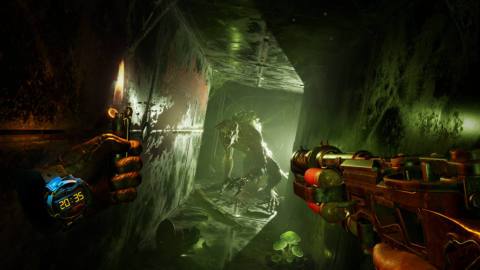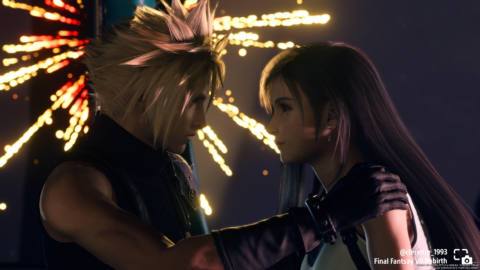In our previous PS Blog post, we shared the design philosophy and creative process behind Rayton, the protagonist of F.I.S.T.: Forged In Shadow Torch. Today, we will talk about his combat skills and how we designed a satisfying, yet elegant, combo system for players to enjoy.
At the beginning, we made it clear that the combat system in F.I.S.T. should be designed to provide an arcade-style action experience. Apart from our crazy love for the arcade scene when we were young, the characteristics of arcade games are also fascinating: those combat systems are easy to understand and become confident with. Players can have fun in these games very quickly. This is the kind of game experience we want our players to have in F.I.S.T.
In our initial design, combat involved a single attack button. Press and hold to charge; press the button to launch combo skills; when the enemy’s HP is reduced to a certain value, press the button to launch an Execution.
One button covered three key attacks: a powerful strike at the battle’s start, a set of continuous attacks during, and a gorgeous Execution at its end. The functions and visual effects worked as one, giving the sensation of an arcade experience. We were very satisfied with it.
We spent more than two months producing a demo based on this system. Feedback from players who tried the demo at expos was positive, which convinced us that we are heading in the right direction.
The contradiction between streamlined combat and rich stages
Then, we started formal development. We defined F.I.S.T. as an easy-to-operate action game with more than 10 hours of main story playtime, an expansive and seamless map, and a large number of exploration elements. However, after completing the first stage, with more and more content and a longer overall playtime added in, the original combat system began to show some disadvantages.
The original three-stage combat experience involves charge, attacks, and Execution. Charge attacks take time to prepare, which is difficult when combat encounters happen suddenly. Execution is essentially a performance with little input beyond the initial activation. As a result, players have to press the same button again and again for combo attacks most of the time during the battle.
Such a combat system is a reasonable design for a 15-minute demo, but not quite as suitable for a game that lasts a few hours. It became boring.
Considerations while designing combo attacks
After rethinking the player experience when performing combo attacks, we decided to add one button into the combat system. The two attack buttons are to perform light attack and heavy attacks. Players will need to memorize combos, such as L(ight)L(Light)H(eavy), LHL, HLH to perform different skills.
But we don’t want to give up our original intention of developing an arcade-styled action game. If it’s necessary to memorize combos, how could we simplify it as much as possible? After several brainstorms, we developed the following rules:
- Each combo must begin with a light attack
- The maximum number of hits in a combo is 5
- No light attacks after a heavy attack
- Use as few buttons as possible
With these rules, we restrict combo skills to the following seven:
LH, LLL, LLH, LHH, LLHH, LLLH, LLLHH
Seem hard to remember? In fact, the combos are easy to perform in F.I.S.T. First, you need to perform an A action. If you want to launch combo skills, perform a B action.
This combo system satisfied our need to develop a combat system that is simple but interesting. Starting with a light attack and ending with a heavy attack, the combo system provides an intensifying battle process. In design language and picture performance, we also realized a certain consistency with this intensifying trend.
In addition, given that there are three weapons in the game, we divide some moves with similar effects into a unified operation mode. For example, for all the three weapons, AB knocks the enemy into the air. Players don’t have to memorize different air launchers for each weapon.
Fine-tuning a balanced combat system
As the development goes on, besides combo skills, we added more battle operations such as SP skill, throw skill, special skills, weapon switching, jump, dash, and cancel. Players will have more choices in combat.
However, throughout development, we have been doing “addition” and “subtraction” at the same time for every battle system. We would like players to have more moves in battle, but we also wanted those moves to be understood and handled as easily as possible. The ultimate goal is to let our players launch those cool moves in a relatively simple way as if they were in the arcade hall.
F.I.S.T.: Forged In Shadow Torch will be released on PS5 and PS4 on September 7, but you can pre-order at PlayStation Store now.







